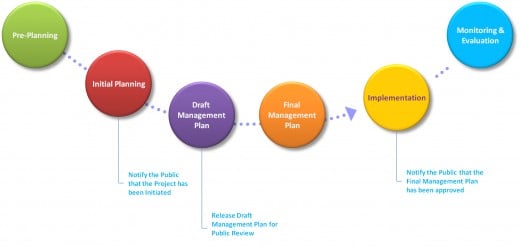
We often come across the word management referring to people who run enterprises organized as either sole-trading or partnership firms. These organizations are either owner-manager or managed by professional managers. But in the current situation require professionally trained people to manage the business. The extent of success these managers achieve depends on their knowledge of management theory and its skillful application. In the transition from owner-managed enterprises to professional-managed enterprises, profit is no longer the sole indicator of success. The management is obliged to put up performance in areas which are concerns of groups other than owners.
Concept of Management
Management is essential at all levels of an organization. But the word management has been given different interpretations. It is used as a noun, a process, and a separate discipline.
Management as a noun
In general and popular usage, management refers to a distinct group of people who direct the activities of other people and material resources toward the attainment of predetermined goals. Giving a Broader meaning to it, one can look at management as a resource, a system of authority, and a class of elite.
1. Management as an economic resource: The economist's view of management is that it is a factor of production just like entrepreneurship, capital and labor. The managerial resource, to a large extent, determines organizational effectiveness and efficiency. Hence in a dynamic environment, managerial development is more important and its use must be more intensive.
2. Management as a system of authority: Management is a system of authority in the sense that it consists of a team of managers who are responsible for making decisions and supervising the work of others. Managers at different levels possess a varying degree of authority. Higher level managers manage managers at middle levels. Middle and lower level managers supervise and control their subordinate managers and workers.
3. Management as a class of elite: Sociologists view management as a class and status system. Increasing complexity of management in the modern complex organization has led to managers being regarded as a distinct class in society, who possess knowledge and skill of higher order. Access to managerial positions is based on achievement criteria, rather than on ascriptive criteria (ie. on family and social origins). This development is viewed by some as a managerial revolution in which the managerial class threatens to become autonomous groups with increasing amount of power. Others view this development not with alarm because the increase in power of managers attracts more of them, which prevents managerial autocracy.
Management as a process
Interpreted as a process, Management consists of a series of inter-related managerial activities classified into various functions with a systematic approach, so as to integrate physical and human resource into an effective operating unit. Management is thus, regarded as the process by which a co-operative group directs action towards common goals.
Management as a discipline
Another connotation of management is that it is a separate discipline having a systematized body of knowledge which managers use in performing their jobs. As a separate field of study, management includes the principles and practice of general management as well as of the various functions of management. It has developed its own techniques and approaches. The theoretical foundations of management have evolved on the basis of experience, observation and scientific investigations.
Related topics:
Definition of Management: Click Here
Management and Administration Click Here
Management as a profession
Classification of managerial skills
Nature of Management
Social Responsibilities of Management
To read management stories please click here

